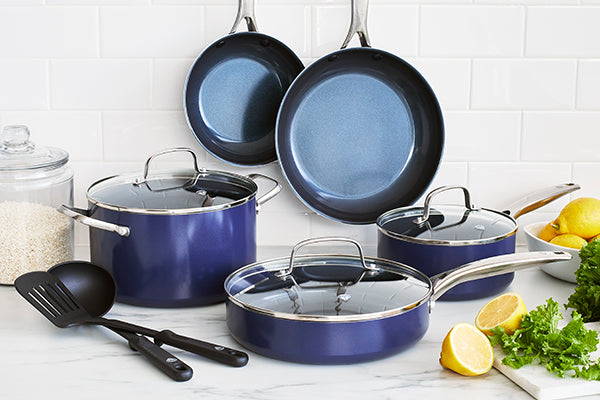Stainless steel cookware, a ubiquitous presence in the culinary realm, enjoys an unassailable reputation for its resilient constitution and aesthetic allure. The burning question that ignites the curiosity of gastronomic aficionados revolves around the judicious application of metal utensils on the gleaming surfaces of stainless steel pots and pans. Within the labyrinth of this discourse, we embark on a cerebral expedition, unraveling the intricacies that govern the realm of stainless steel culinary implements, endeavoring to illuminate the path towards optimal utilization without invoking the specter of inadvertent harm.
The Enigmatic Nature of Stainless Steel:
Before we plunge into the labyrinthine depths of utensil usage, an imperative preamble beckons—an intimate comprehension of the very essence of stainless steel. Revered for its impervious stance against the relentless forces of corrosion and rust, stainless steel stakes its claim as the paragon of choice in kitchens across the globe. Yet, in this seemingly impenetrable fortress of resilience, lies the conundrum surrounding the use of metal utensils—a puzzle that requires our discerning gaze.
Navigating the Mosaic of Scratch Resistance:
Stainless steel cookware, endowed with a veneer of scratch resistance, emerges as a stalwart guardian when juxtaposed with its non-stick counterparts. Though the sands of time may etch fine lines upon its surface through the rigors of culinary engagement, the performance remains largely unscathed. Alas, the peril lies in the deployment of tools with an abrasive proclivity or utensils bedecked in the armor of sharp edges—culprits that orchestrate an accelerando in the symphony of scratching.
The Symphony of Recommended Metal Utensils:
In this cacophony of culinary considerations, a harmonious note resonates—stainless steel cookware harmonizes with the embrace of metal utensils. Opt for the serenade of softer metals, such as stainless steel, aluminum, or the timeworn elegance of wood, to mitigate the risk of unsolicited scratches. A cautionary refrain reverberates against the siren call of utensils boasting sharp contours or the unyielding demeanor of cast iron.
The Art of Damage Avoidance:
To partake in the dance of durability, an allegiance to best practices becomes a sacrosanct covenant. Stir, flip, and serve with the mettle of metal utensils, but tread lightly on the precipice—eschew the impulsive desire to cut within the pan with tools that brandish a sharp countenance. Moreover, in the cleansing ritual, shun the alliance with metal scouring pads, for they, in their abrasive exuberance, may inscribe the narrative of scratches upon the stainless steel canvas.
Nurturing the Progeny of Cookware:
In the pantheon of stainless steel preservation, the rituals of regular cleansing and attentive care stand as the sentinels of longevity. The alchemy of handwashing, orchestrated with a mild detergent and the caress of a soft sponge, emerges as the anointed path. Should stains or discolorations cast their ominous shadows, a concoction of baking soda and water stands poised as the elixir, promising the restoration of lost luminosity.
Conclusion:
As the curtain descends on our culinary odyssey, the verdict echoes through the hallowed corridors—utilizing metal utensils on the stainless steel stage is a dalliance with safety when cloaked in the vestments of prudence. Pledge allegiance to the softer echelons of metal utensils, eschew the tyranny of excessive force and razor-sharp edges. By adhering to these precepts and embracing the sacrament of meticulous cleaning, the saga of stainless steel cookware unfurls its pages, inviting one and all to savor its benefits through the tapestry of time.
